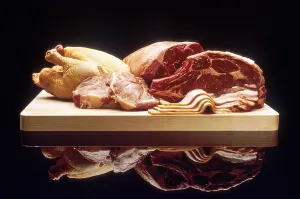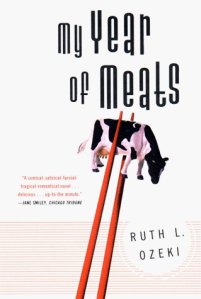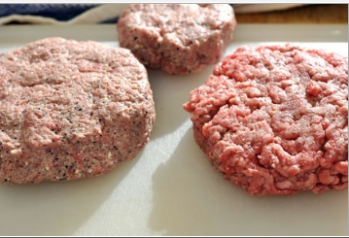In “Why Are Ethical Issues Central to Documentary Filmmaking,” Bill Nichols writes that every film is a documentary; each film is either a documentary of wish-fulfillment (fiction) or a documentary of social representation (non-fiction) (Nichols). Louie Psihoyos’ The Cove (2009) embodies the latter category of what can simply be called a documentary film as it follows Ric O’Barry’s struggles to expose the slaughtering of dolphins in the waters of a remote lagoon located in Taiji, Japan.

(7:48)
The Cove establishes Ric O’Barry as its main protagonist, and the documentary details not only his role in dolphin activism today but also his history with commercial dolphin captivity (Psihoyos). The film first depicts Ric O’Barry’s earlier works with dolphins. He once worked as a dolphin trainer for the 1960s TV series Flipper – a show that propelled dolphins into the mainstream (Psihoyos). O’Barry’s past as a trainer for the popular Flipper series helped commercialize the capturing of dolphins (Psihoyos). However, after production of the series ended, O’Barry adopted the life of an activist. He believes that Kathy, the main dolphin that acted as “Flipper,” committed suicide by suffocating herself when she purposefully did not open her blowhole to take another breath (Psihoyos), and since that incident, he has worked to release captive dolphins back into the wild (Psihoyos). The film almost appears to document O’Barry’s effort to rectify his past and what happened to Kathy. By illustrating to the audience O’Barry’s past and current actions, the documentary personalizes Ric O’Barry’s life. It becomes an appeal to the emotions of the viewer and an attempt to win the audience to O’Barry’s side.

(7:44)
The documentary even depicts the commitment of Ric O’Barry. He says, “I never planned on being an activist. One thing leads to another, and now if there’s a dolphin in trouble anywhere in the world, my phone will ring” (Psihoyos). The statement by O’Barry demands the viewer to acknowledge the dedication he has to his cause; it is another passionate ploy to gain the viewer to the side of “the speaker” (Nichols).

(3:07)
With O’Barry established as Nichols’ “speaker,” the documentary then portrays Taiji and its lagoon as the “them” that is spoken about – or against (Nichols). Ric O’Barry is the speaker (the activist) who tries to convey to the viewer that Taiji is a “little town with a really big secret” (Psihoyos) – that is, dolphin slaughter by local fisherman and townsfolk occurs in an isolated cove in Taiji.

(30:08)
From the “helicopters” to the “drones” to the “thermal cameras” (Psihoyos), the documentary takes on a tone of espionage and covert operations under Ric O’Barry and his crew. In what appears to be an attempt to place the viewer on the actual team, the documentary even displays to the viewer a map that details all the locations where the crew should not trespass. This aspect in the film essentially translates into another (fun) appeal to the viewer to gain him or her onto the Ric O’Barry effort against dolphin slaughter.

(46:11)
Ethical issues also remain apparent in The Cove. Food becomes pertinent when the film attempts to document Japan’s “covering up” of the sale of dolphin meat in its markets (Psihoyos). In the documentary, Scott Baker claims, “Dolphin meat is generally considered to be a less desirable commodity, and it would sell for far, far less, if it was properly labeled. So the meat is distributed much more widely than…recognized” (Psihoyos). The film portrays Japan’s government to be in cahoots with the slaughtering of dolphins in order to help the fishing industry, which sees dolphins and other whales as “pests” that hinder the size of the catch (Psihoyos). But this is also where the film fails to depict to the viewer the other side; actual Japanese activists never make appearances in the film. The viewer instead is shown obliviousness in the Japanese population when various native citizens display ignorance on the subject in front of the camera. By dehumanizing the Japanese people into one group that seems to be either for dolphin slaughter or ignorant of it, The Cove makes yet another effort to win the viewer onto the side of the speaker.
However, with all its endeavors to create a one-sided story of Ric O’Barry against the slaughtering of dolphins aside, the documentary still questions real ethical issues. The documentary rightfully portrays dolphins as creative creatures with the ability to recognize self and capacity to learn and display intelligence at the level of humans (Psihoyos). The main issue becomes not that of government corruption but that of the brutal slaughter of intelligent beings. As humans, the ability to be conscious of being conscious remains remarkable – and this level of consciousness has been documented in dolphins (Psihoyos). The documentary humanizes the dolphins in an effort to put the main issue at the forefront. It allows the viewer to place him or herself into the dolphin’s flippers; it becomes an issue of right and wrong, a moral dilemma. Separate species and mercury health side effects aside, humans and dolphins belong in the same category with regards to the ability to recognize oneself in the world.
Works Cited
Nichols, Bill. “Why Are Ethical Issues Central to Documentary Filmmaking,” from Introduction to Documentary(Bloomington: Indiana UP, 2010), 42-66.
Psihoyos, Louie. The Cove. Lionsgate, 2009. Film.










